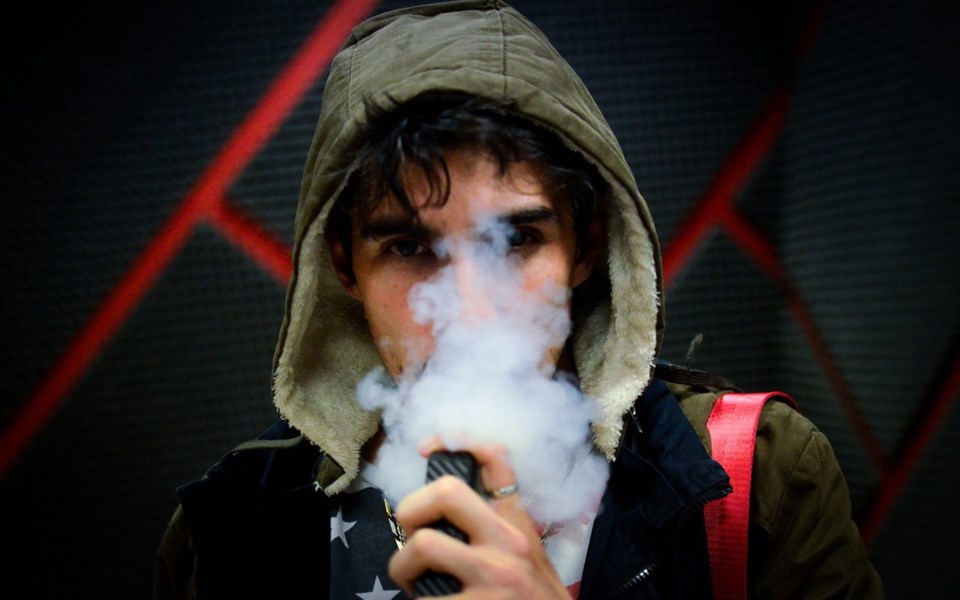With youth vaping on the rise, the local school district and health authority is seeking to get an important message out to teens: Don't vape.
"It might be less harmful than combustible cigarettes but it doesn't mean it's harmless," said Dr. Geoff McKee, a medical health officer with Â鶹´«Ã½Ó³»Coastal Health.
That's because vaping liquid-or, as the kids are calling it, "vape juice"-can contain higher concentrations of nicotine than regular cigarettes (in addition to other toxic chemicals).
Moreover, nicotine can have a negative impact on the developing brain, added McKee.
"It can cause irritability and some other physiological impacts that can potentially cause some problems for youth," he said.
While decades-long campaigns to curb smoking among high-school students has had limited success, some worry that the advent of e-cigarettes-which are generally considered far less harmful-could set things back.
According to the McCreary Centre Society's 2018 BC Adolescent Health Survey, the percentage of B.C. youth who had smoked tobacco in the previous 30 days was 26 per cent in 2008, compared to 18 per cent in 2018.
McKee and others fear that the popularity of vaping could eat into that progress, as it creates nicotine addiction.
"We do worry that with the increasing popularity of vaping-particularly vaping with nicotine-that we might reverse some of the trends that we saw with regards to tobacco smoking with youth," said McKee.
In May 2018, Canada implemented more permissive vaping policies, opening up the Canadian market for the largest vaping players to openly sell and advertise their products.
"[Companies] are creating new interesting ways to vape that play into the culture around it," said McKee, citing the example of Juul, a wildly popular e-cigarette that has been criticized for targeting youth.
"While in the past there might be lower concentration of nicotine, products like Juul have developed higher-nicotine concentration products," said McKee.
School District 48 (SD48) has been grappling with how to discourage vaping in Sea-to-Sky schools, said assistant superintendent Chris Nicholson
It is facing vaping rates that are considerably higher than the provincial average.
According to the McCreary 2018 survey, 31 per cent of teens (15 and up) reported having vaped in the past 30 days. That compares to a provincial average of 21 per cent.
Last year-in an effort to stop bathroom vaping at Whistler Secondary School-school administrators removed the doors of the boys' and girls' washrooms, said Nicholson.
Parents need to take a proactive approach when it comes to discussing vaping with their kids, he said.
To help guide the conversations, Nicholson advised using a factsheet available on the school district's website ().
"Parents need to be very open and frank with their kids about what vaping is and what it isn't," he said, adding that school councillors are equipped with resources to help students quit vaping, and that the product is strictly prohibited at SD48 schools.
"For kids it's illegal, it's not permitted," he said. "We're not in a position to provide places [to vape]. We don't condone or support vaping among youth."
Read the original story at Pique Newsmagazine .Ìý



